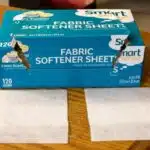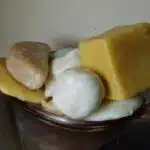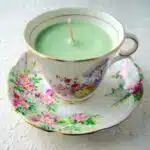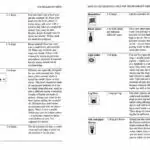Making homemade soap is an enjoyable and rewarding experience that can also be a way to serve others. Whether you are interested in creating a unique gift for your loved ones or starting a small soap-making business, the process of making soap from scratch can be both satisfying and fulfilling. With the right ingredients, tools, and techniques, anyone can learn how to make homemade soap that is natural, eco-friendly, and gentle on the skin.
In this article, we will explore some of the basic principles of soap making and provide step-by-step instructions for creating your own handmade soap. We will discuss different types of oils and fats that are commonly used in soap making, as well as various additives such as herbs, essential oils, and colorants. We will also cover important safety precautions and tips for troubleshooting common problems. By the end of this article, you will have all the knowledge you need to start making your own homemade soap at home.
The Science Behind Soap Making
Soap making is a fascinating process that involves chemical reactions to create a cleansing agent. The main ingredients used in soap making are oils or fats and an alkali solution, such as lye. When these two substances are combined, they undergo a reaction called saponification. This reaction creates soap and glycerin as byproducts.
The pH level of the soap is essential to its effectiveness as a cleaning agent. A pH level of around 9-10 is necessary for the soap to be effective at removing dirt and oils from the skin. Higher or lower pH levels may cause irritation or even damage to the skin. It is crucial to measure the pH level of your homemade soap using litmus paper or a digital pH meter.
Understanding the science behind soap making is crucial to creating high-quality soap. Chemical reactions between oils/fats and an alkali solution result in saponification, producing both soap and glycerin. Maintaining proper pH levels in your homemade soap ensures that it will effectively clean the skin without causing irritation or harm. Next, we will discuss the essential tools and ingredients needed for successful soap making.
Essential Tools And Ingredients
Molds are essential for making homemade soap and are available in various sizes and shapes to suit the desired finished product. Soap base is the main ingredient of handmade soap and is typically made from a combination of natural oils and fats. Fragrance oils are used to scent the soap, and colorants are used to tint the soap. Measuring cups are necessary for accurate measurement of ingredients. Safety gear such as gloves, aprons, and safety glasses should be worn while working with lye and other ingredients. Mixing bowls, spoons, a thermometer, and containers are also needed when making homemade soap.
Molds
When it comes to making soap, selecting the right mold is crucial. Silicone and wooden molds are two popular options among soap makers. Silicone molds are preferred for their flexibility and ease of use. They come in different shapes and sizes, making them ideal for creating unique designs. On the other hand, wooden molds offer a classic look and feel to homemade soaps. They are durable and reusable, but require lining with parchment paper or freezer paper before pouring the soap mixture.
Creative mold shapes can add an extra touch of beauty to your homemade soaps. From hearts to flowers, animals to geometric shapes, the possibilities for creative mold shapes are endless. Keep in mind that intricate designs may be challenging when using silicone molds as they may not hold their shape well during curing. However, wooden molds can accommodate more complex designs due to their sturdiness and stability.
In conclusion, selecting the right mold is just as important as choosing quality ingredients when making homemade soap. Consider the advantages of both silicone and wooden molds based on your needs and preferences. And don’t forget to experiment with creative mold shapes to make your soaps even more unique!
Soap Base
One of the essential tools and ingredients in soap making is the soap base. The soap base is the foundation of any soap recipe, and choosing the right one can make all the difference in the final product. There are different types of soap bases available on the market, such as glycerin, goat milk, shea butter, and coconut oil.
Using a natural soap base has numerous benefits. Natural or organic soap bases are free from harmful chemicals like parabens and sulfates which can irritate sensitive skin. They often contain natural ingredients like essential oils, botanicals, and herbs that provide nourishing properties to our skin. Additionally, they are eco-friendly and sustainable.
When selecting a soap base, it’s crucial to consider your skin type and desired outcome for your finished product. For example, glycerin bases are ideal for creating transparent soaps or embedding objects within them while shea butter bases add extra moisturizing properties to your soaps. By selecting the appropriate soap base, you can create soaps that not only look great but also provide benefits to your skin.
Fragrance Oils
As a soap making expert, it’s essential to know that fragrance oils are a crucial ingredient in soap making. Fragrance oils provide an added sensory experience and can impact the mood of the user. Using natural fragrances like essential oils can also provide benefits to the skin and overall well-being. However, synthetic fragrances are also widely used in soap making due to their affordability and wide variety of scents available.
When using fragrance oils in soap making, it’s important to consider the amount used to prevent skin irritation or allergic reactions. It’s recommended not to exceed 3% of fragrance oil per pound of soap base. Additionally, it’s crucial to choose high-quality fragrance oils from reputable suppliers.
Incorporating fragrance oils into your soap recipes can elevate the final product and provide an enjoyable experience for users. With careful consideration and proper usage, fragrance oils can add a unique touch to your soaps while also providing potential benefits to your skin and well-being.
Choosing The Right Oils And Fats
To create a perfect bar of soap, choosing the right oils and fats is crucial. These ingredients are responsible for adding moisturizing properties and lathering abilities to the soap. Some of the most commonly used oils in soap making include coconut oil, olive oil, palm oil, castor oil, and shea butter. Each type of oil has its unique properties that can enhance the final product. For instance, coconut oil provides a hard bar with excellent cleansing properties while olive oil offers a luxurious feel and conditioning qualities.
The saponification process is what turns these oils and fats into soap. During this chemical reaction, lye reacts with the oils to form soap molecules and glycerin. The amount of lye required depends on the specific recipe you choose. Therefore it’s essential to measure your ingredients accurately when creating your soap making recipes.
Understanding how lye works and its role in soap making is vital to ensure that you make safe and effective bars of soap. Lye is an alkali that reacts with oils to create soap through a process known as saponification. However, it’s important to note that lye can be dangerous if not handled correctly as it can cause chemical burns or irritate skin. To use lye safely in your homemade soaps, always wear protective equipment such as gloves and goggles, measure accurately, and follow proper mixing instructions.
Understanding Lye And Its Role In Soap Making
Lye is a critical component in soap making, as it enables the formation of saponification reaction that transforms oils and fats into soap. Lye, which is also known as sodium hydroxide, is an alkaline substance that reacts with acids to produce salt and water. In soap making, lye is used to break down the fatty acids found in oils or fats so that they can combine with alkali to form soap.
Although lye plays a vital role in the soap-making process, it can be dangerous if not handled correctly. Lye safety precautions should always be taken to prevent accidents when working with this chemical. When mishandled, lye can cause severe burns or even blindness. It is essential to wear protective gear such as gloves and goggles to protect yourself from any potential harm.
Soap making involves several chemical reactions, one of which occurs between lye and the oils present in the mixture, leading to the formation of a new substance: soap. This chemical reaction is known as saponification and results in a solid bar of soap that can be used for personal hygiene or cleaning purposes. It’s crucial to understand how these chemical reactions work so you can create high-quality soaps that meet your needs.
- To ensure safety when working with lye, always wear protective gear such as gloves and goggles.
- Only mix lye with water – never add water to lye.
- Avoid inhaling fumes produced by mixing water and lye.
- Keep children and pets away from areas where you are handling lye.
Understanding lye’s role in soap making is essential for creating high-quality soaps safely. However, it’s equally important to learn about safety precautions for handling lye before starting your project. By taking proper safety measures when working with this chemical compound, you can ensure that your experience remains positive and free of accidents or injuries.
Safety Precautions For Handling Lye
Just as the scent of lavender can transport you to a tranquil garden, understanding lye and its role in soap making can take you on a journey towards creating your own luxurious bars of soap. However, before diving into the exciting process of making homemade soap, it is crucial to understand the safety precautions for handling lye.
The first step in ensuring safety while handling lye is proper ventilation. Lye emits fumes that can be harmful to inhale, so it is essential to work in a well-ventilated area. This means opening windows and doors or using an exhaust fan. If possible, it is best to work outside where there is plenty of fresh air.
Along with ventilation, protective equipment and clothing are necessary for safe handling of lye. Always wear gloves and eye protection when working with lye. Additionally, choose clothing made from materials that will not absorb liquids easily, such as rubber or PVC aprons and boots. Long sleeves and pants are also recommended to protect against accidental splashes or spills.
As important as understanding how to handle lye safely is calculating the right amounts of water and lye needed for your soap recipe. In the next section, we will dive into the crucial steps needed to accurately measure out these ingredients without any hiccups along the way.
Calculating Lye And Water Amounts
Calculating the correct amount of lye and water is crucial to the success of your homemade soap. Lye, also known as sodium hydroxide, is a caustic substance that can be dangerous if not handled properly. It’s important to wear protective clothing and work in a well-ventilated area when measuring and mixing lye.
To calculate the amount of lye needed for your soap recipe, you will need to know the weight of your oils and the desired superfat percentage. Superfatting is the process of adding extra fats or oils to your soap recipe to ensure that there is no excess lye in the finished product, which can cause irritation or burns on the skin. You can use an online soap calculator or a formula to determine the exact amount of lye needed for your recipe.
While lye is a common ingredient in soap making, there are alternatives such as potassium hydroxide (KOH) that may be used instead. KOH creates a softer, more liquid soap than sodium hydroxide and is often used for making liquid soap or shampoo bars. Whichever type of alkali you choose to use, it’s important to measure with accuracy and follow safety guidelines to ensure a successful batch of homemade soap.
As you prepare to make your own homemade soap, remember that measuring accurately and handling ingredients safely are key factors in producing a high-quality product. In the next section, we will discuss how to mix your measured oils with your calculated lye solution.
Mixing The Oils And Lye Solution
- When preparing oils for soap making, it is important to measure the oils precisely and mix them together in the correct proportions.
- When mixing the lye solution, it is important to use the correct amount of lye, as this will affect the final product.
- The lye solution should be mixed in a well-ventilated area, using protective equipment.
- The lye solution should then be slowly added to the oils, stirring continuously for an even mixture before pouring into the mold.
Preparing Oils
Heating methods and measuring equipment are crucial when preparing oils for soap making. One way of heating the oils is through the double boiler method, which involves placing a pot of water on a stove and then placing another pot containing the oils on top of it. This indirect heating method helps prevent scorching or burning of the oils. Another heating method is using a microwave oven, but one must be careful not to overheat the mixture. Measuring equipment such as a scale or graduated cylinder should also be used to ensure accurate measurements of oils.
When selecting oils for soap making, it is important to consider their properties and benefits for the skin. For instance, olive oil makes a mild and moisturizing soap, while coconut oil produces a lathering effect. Additionally, castor oil can help boost lather and add conditioning properties to the soap. Once these oils have been selected and measured according to the recipe’s instructions, they are heated until they reach their melting point before being mixed with the lye solution.
It is important to note that safety precautions must be taken when working with lye solution as it is highly caustic and can cause chemical burns if not handled properly. Protective clothing such as gloves and goggles should be worn at all times during this process. After mixing the oils with the lye solution, one can begin adding fragrances or colors to personalize their soap-making experience. By following these steps carefully, one can create a homemade soap that is both beneficial for the skin and enjoyable to use without any harsh chemicals or additives.
Mixing Lye Solution
After selecting and measuring the oils according to the recipe’s instructions, the next step in soap making is mixing them with lye solution. Lye, also known as sodium hydroxide, is a highly caustic substance that requires proper handling to avoid chemical burns. Thus, it is crucial to take safety precautions when working with lye solution. Wear protective clothing such as gloves and goggles at all times during this process.
When it comes to mixing lye solution, there are two techniques: hot and cold processing. In hot processing, the lye solution is added to melted oils, while in cold processing, the lye solution is added to room temperature oils. Hot processing can speed up saponification and eliminate some of the curing time but requires careful monitoring of temperature and consistency throughout the process. Cold processing takes longer but allows for greater control over the ingredients’ properties and results in a more natural-looking soap.
Regardless of which technique you choose, it is essential to mix the lye solution carefully with the oils. Add small amounts of lye solution at a time while stirring constantly until fully incorporated. Be sure not to splash or spill any mixture on yourself or your surroundings when pouring or stirring. Mixing lye solution may seem daunting at first, but with proper precautions and techniques, it becomes manageable and results in beautifully crafted soaps that are gentle on your skin.
Adding Additives For Scent And Color
After mixing the oils and lye solution, it’s time to add natural ingredients to your soap. These additives can provide a variety of benefits, such as exfoliation, moisturizing, and aromatherapy. Some popular natural ingredients include oatmeal, herbs, and honey. When adding these ingredients, make sure they are finely ground and evenly distributed throughout the soap mixture.
When it comes to scenting your soap, you have two options: fragrance oils or essential oils. Fragrance oils are synthetic scents that come in a wide range of varieties and are often less expensive than essential oils. However, they may contain chemicals that can irritate sensitive skin or cause allergies. Essential oils are derived from plants and offer a more natural option for scenting your soap. They also have therapeutic properties such as relieving stress or promoting relaxation.
Before pouring and molding the soap, it’s important to consider any additional colorants you want to use. Natural colorants such as clays or spices can be added for a subtle hue, while synthetic colors can provide a more vibrant look. When choosing colorants, keep in mind that some may change the texture or scent of your soap. It’s best to test small batches before committing to a full recipe. With these additives added to your mixture, you’re ready for the next step of pouring and molding the soap into its final shape.
Pouring And Molding The Soap
Now that you have created the perfect soap mixture, it’s time to move on to the next step: pouring and molding. This is where you can get creative and make unique shapes that will enchant your guests. Soap molds come in various sizes and shapes, from basic rectangular molds to intricate designs like flowers and animals. Regardless of what shape you choose, make sure it aligns with your soap’s purpose.
The pouring process is straightforward but requires patience. First, ensure that your soap mixture is at an ideal temperature for pouring. Then, slowly pour it into your soap mold until it reaches the desired thickness. Once poured, let the soap cool for a few hours or overnight before removing it from the mold. If you’re using intricate molds, be extra careful while removing them as they can break easily.
Creating creative shapes is all about experimentation and letting your imagination run wild. You can use various materials like silicone molds or even household items like cookie cutters to create unique shapes for your soaps. The sky’s the limit when it comes to creativity! However, always keep in mind that the shape should align with your soap’s purpose and convey its message effectively.
Moving forward, curing and cutting the soap are two crucial steps that require attention to detail. It’s important to allow enough time for the soap to cure fully before cutting it into bars or other desired shapes. This step ensures that any excess moisture evaporates from the soap, making it harder and longer-lasting. So stay tuned for our next section on how to cure and cut homemade soaps seamlessly!
Curing And Cutting The Soap
- After the soap is poured and hardened, a curing time of 4-6 weeks is recommended to ensure that the soap is fully saponified and ready for use.
- A sharp and non-serrated knife should be used when cutting the soap into individual bars, as serrated knives can tear the soap and create uneven edges.
- It is important to consider the shape of the soap when cutting, as this will affect the design, appearance, and usability of the final product.
- For a more aesthetically pleasing and professional finish, the soap should be cut into perfect rectangles or squares.
- For a more rustic, artisanal, and natural look, the soap can be cut into irregular shapes, such as circles or ovals.
- A soap cutter can be used to create consistently-sized and shaped bars with minimal effort.
Curing Time
Curing time is an essential part of the soap making process. It refers to the time it takes for the soap to dry and harden before it can be used or sold. While some may argue that curing time is unnecessary, it is best practice to allow your soap to cure for at least four weeks. This ensures that excess water has evaporated from the soap, making it harder and longer-lasting.
Although waiting for four weeks can seem like a long time, there are ways to shorten curing time without compromising the quality of your soap. One method is using a dehumidifier or placing your soap in a warm, dry place with good ventilation. This will help speed up the drying process by removing excess moisture from the air surrounding your soap. However, it’s important to remember not to rush this process as it can lead to softer bars that dissolve faster.
The benefits of letting soap cure longer are numerous. Not only does it result in harder bars that last longer, but it also allows for a better lather and a more luxurious feel on the skin. Additionally, curing time allows any excess oils in the recipe to fully saponify resulting in a milder and gentler bar of soap. Therefore, while it may be tempting to use your homemade soap right away, allowing it sufficient curing time will ultimately result in a superior product that you can enjoy for months to come.
Cutting Tools
After curing your soap for the recommended amount of time, it is time to cut it into bars. Cutting is a crucial step in the soap making process as it determines the size and shape of your bars. Choosing the right cutting tool is important to ensure that you achieve clean cuts without damaging or squishing your soap. In this subtopic, we will discuss different types of cutting tools, safety measures, and maintenance tips.
There are several cutting tools available for soap makers, including wire cutters, straight blade cutters, and crinkle cutters. Wire cutters are ideal for beginners as they are easy to use and produce clean cuts. On the other hand, straight blade cutters can be used to create more intricate designs on your soap bars. Crinkle cutters are another option that adds a decorative touch to your bars. Whichever tool you choose, it’s essential to use caution when cutting as sharp blades can cause injury if not handled properly.
When using cutting tools, safety measures should always be taken into consideration. It’s important to wear protective gloves and eyewear when handling sharp objects such as blades or wire cutters. Additionally, make sure that your workspace is clear of any clutter or distractions that could cause accidents.
Lastly, proper maintenance of your cutting tools is necessary to ensure their longevity and efficiency. After each use, wipe down your blade with a damp cloth and dry thoroughly to prevent rusting. Sharpening your blade regularly also helps maintain its sharpness and effectiveness. By following these maintenance tips, you can ensure that your cutting tools are always ready for use when needed.
In summary, choosing the right cutting tool is crucial in achieving clean cuts while ensuring safety measures are taken at all times. Proper maintenance also helps prolong the life of your tools so that they remain efficient with each use. With these tips in mind, you can confidently move onto packaging and presenting your homemade soap bars!
Cutting Shape
After successfully curing your soap, the next step is cutting it into bars. Cutting the soap into desired shapes and sizes is an essential part of the process. This allows you to create unique and personalized soap bars that match your preferences or customers’ requirements. The shape of your soap can be changed by using soap carving techniques or decorative molds.
Soap carving techniques are a fun way to personalize your soap bars. You can use a variety of tools like knives, vegetable peelers, or spoons to carve intricate designs on your soap bars. This method requires patience and skill as it involves removing parts of the soap bar to create different shapes or patterns. On the other hand, decorative molds offer an easy way to achieve uniform shapes without much effort.
When cutting your soap into different shapes or sizes, it’s important to consider the intended use of the bar. For example, if you’re making bath bombs or shower melts, small cubes may be ideal for ease of use. For hand soaps, rectangular shaped bars may be more practical. Regardless of what shape you choose, ensure that it’s comfortable for users and adds value to their experience with your product. With these tips in mind, you can create beautiful and functional soap bars that meet your needs and delight customers who value quality products.
Troubleshooting Common Soap Making Problems
Common mistakes can occur during soap making that can lead to various problems. One of the most common is incorrect measurements of ingredients, which can result in a lye-heavy or oil-heavy recipe. To avoid this, always measure all ingredients accurately and double-check your calculations before adding any ingredients to the mixture.
Another mistake is not properly mixing the ingredients together. This can cause clumps or air pockets in the soap, resulting in an uneven texture. To avoid this, mix your ingredients thoroughly and consistently until they are well combined.
In addition, overheating or underheating the mixture can also cause issues. Overheating may lead to burned oils or lumpy textures while underheating may result in a soft or sticky soap. Always follow the recipe’s instructions carefully and use a thermometer to ensure that you are heating your soap mixture to the correct temperature. Troubleshooting tips for these problems include adjusting temperatures accordingly and remixing your ingredients thoroughly before pouring them into molds.
Moving on from common soap making problems, it is important to consider whether you want to make bar or liquid soap. Each has its own benefits and drawbacks, so it depends on what you prefer. In the next section, we will explore the differences between making soap bars versus liquid soap and help you decide which one is right for you based on your specific needs and preferences.
Making Soap Bars Vs. Liquid Soap
Are you torn between making soap bars or liquid soap? Both have their pros and cons, so it’s important to consider your needs before deciding which one to make. Soap bars are often easier to make at home and require fewer ingredients than liquid soap. They can also be more cost-effective in the long run and have a longer shelf life.
On the other hand, liquid soap can be more versatile and convenient for certain purposes, such as handwashing or using as a body wash. Liquid soap also tends to have a smoother texture and may be more appealing for those with sensitive skin. However, creating liquid soap requires additional equipment and ingredients compared to making soap bars.
When it comes to shelf life, both soap bars and liquid soap can last for several months if stored properly. However, liquid soap may have a shorter lifespan due to its higher water content. Additionally, certain additives used in either type of soap may affect their shelf life.
Now that you’ve weighed the pros and cons of each option, it’s time to decide which one will work best for your needs. If you’re looking for simplicity and cost-effectiveness, consider making soap bars. If you want versatility and convenience, try making liquid soap instead. Whichever route you choose, there are endless possibilities when it comes to creating unique designs for your homemade soaps.
Creating Unique Soap Designs
After mastering the art of making soap bars and liquid soap, it’s time to take your soap-making skills to another level by creating unique soap designs. One way to make your homemade soap stand out is by experimenting with different shapes. You can use molds in various sizes and shapes such as flowers, hearts, stars, and even animals. The possibilities are endless, and you can mix and match different shapes to create a unique design.
Another way to create unique soap designs is by using soap carving techniques. Soap carving involves sculpting the soap bar into intricate designs using carving tools such as knives, scrapers, and chisels. This technique requires patience and skill but can result in stunning designs that are sure to impress. Some popular soap carving techniques include relief carving, chip carving, and incised carving.
Creating unique soap designs is a great way to express your creativity while providing a useful product for yourself or others. Whether you decide to experiment with different shapes or try out soap carving techniques, there are endless possibilities when it comes to making homemade soap. So why not take the plunge and see what kind of beautiful creations you can come up with?
As you continue on your journey of creating homemade soap with unique designs, it’s important to consider how you’ll be using the finished product. Homemade soaps are not only great for personal care but also make wonderful gifts for friends and family members. Using natural ingredients in your homemade soaps ensures that they are gentle on the skin while providing nourishment and hydration. In the next section, we’ll explore more ways that you can use homemade soap for personal care purposes.
Using Homemade Soap For Personal Care
Using homemade soap for personal care is a great way to take care of your skin while also helping the environment. The benefits of using homemade soap are numerous, as it contains natural ingredients and is free from harsh chemicals that can harm your skin. Homemade soaps are also more affordable than store-bought ones, making them a practical option for those who want to save money.
Different types of homemade soap are available for different skin types. For instance, if you have oily skin, you can use a soap made with tea tree oil or lavender oil to help reduce inflammation and control sebum production. If you have dry skin, a soap made with shea butter or coconut oil can help moisturize your skin and prevent flakiness. Those with sensitive skin can benefit from using fragrance-free soaps that contain gentle ingredients such as oats or chamomile.
Using homemade soap is not only beneficial for personal use but also presents an opportunity to make a positive impact on the world by reducing waste and environmental pollution caused by commercial soap production. By learning how to make your own soap at home, you can take control over the ingredients used in the process and choose eco-friendly packaging options.
Transition: Now that we’ve explored the benefits of using homemade soap for personal care, let’s delve into how you can turn this hobby into a successful business venture by learning about starting a soap making business.
Starting A Soap Making Business
Imagine the satisfaction of creating a soap making business that not only provides financial stability but also brings joy to others. The process of starting a soap making business requires careful planning, dedication, and creativity. As a soap making expert, I have outlined some essential steps that can help you establish a successful business.
Firstly, before launching your business, you need to conduct thorough research on the legal requirements needed for starting a soap making business in your area. This includes obtaining necessary licenses and permits such as FDA approval and registering your business with local authorities. Failure to obtain these legal requirements may result in hefty fines or even closure of your business.
Secondly, developing effective marketing strategies is crucial for building brand awareness and attracting customers. Setting up an online presence through social media platforms such as Instagram, Facebook, and Twitter can go a long way in promoting your products. Additionally, attending local fairs or markets can provide an opportunity to showcase your products while engaging with potential customers.
Incorporating these essential steps into your plan will ensure the success of your soap making business. Remember to stay true to yourself and be creative in developing unique products that cater to the needs of your customers. With dedication and hard work, you can build a thriving soap-making enterprise that brings joy to both yourself and those around you.
Conclusion
Soap making is an art and a science that requires careful attention to detail. By understanding the chemical reactions that occur during soap making, you can create unique bars of soap that are gentle on the skin and free from harmful chemicals. To make homemade soap, you will need essential tools and ingredients such as a digital scale, silicone molds, and high-quality oils and fats.
When choosing oils and fats for your soap recipe, it is important to consider their properties such as hardness, lathering ability, and moisturizing properties. Additionally, understanding the role of lye in soap making is crucial for achieving the desired texture and consistency of your soap bars. It is important to take necessary safety precautions when handling lye to avoid any mishaps.
Whether you prefer traditional bar soaps or liquid soaps, there are endless possibilities for creating unique designs using natural colorants and fragrances. Homemade soaps make great gifts for loved ones or can be used for personal care. If you have a passion for soap making, consider starting a soap making business to share your creations with others. With patience and practice, anyone can master the art of homemade soap making.
Image Credits
- “making homemade soap / shampoo bars” by mommyknows { Kim Becker } (featured)





























